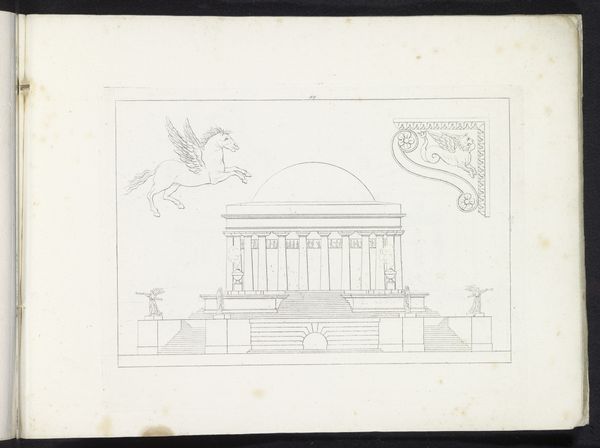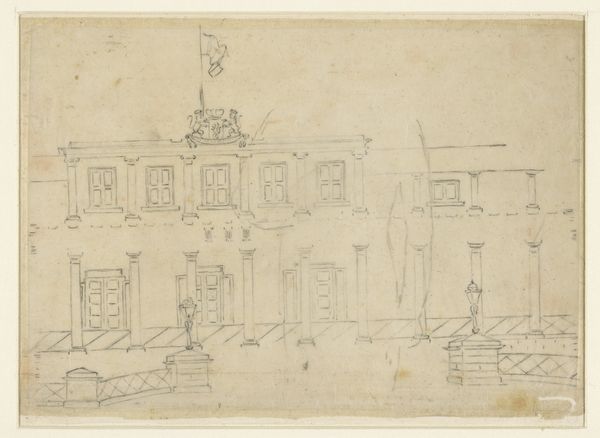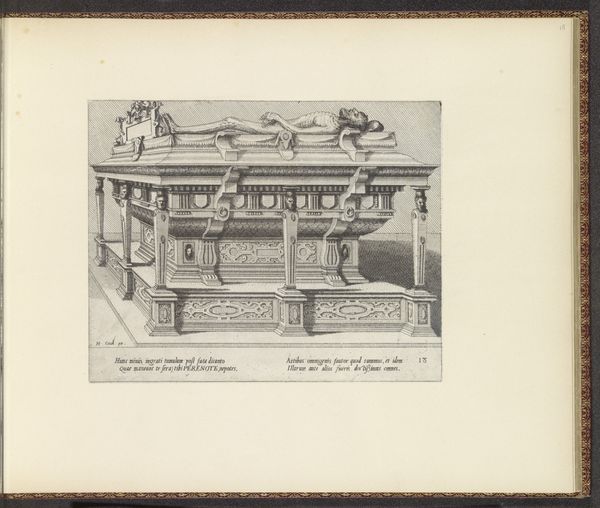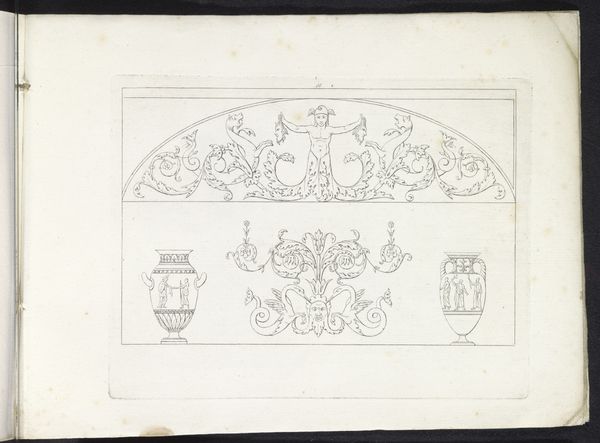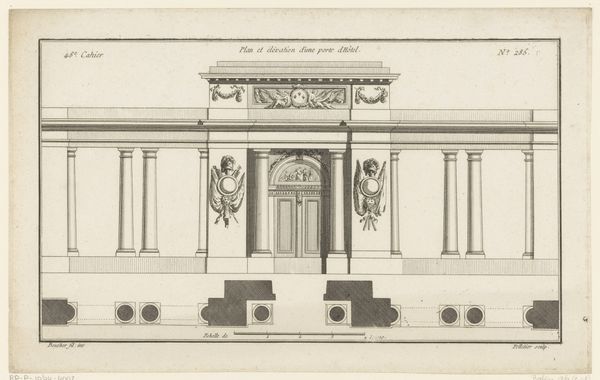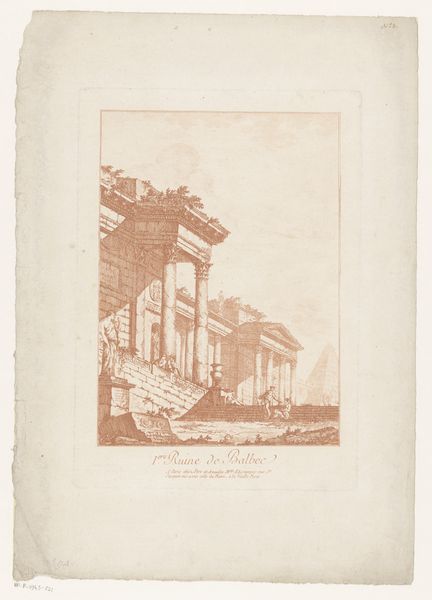
drawing, paper, ink
#
drawing
#
neoclacissism
#
paper
#
ink
#
geometric
#
line
#
history-painting
Dimensions: height 162 mm, width 219 mm
Copyright: Rijks Museum: Open Domain
Curator: This intricate drawing from 1817 is entitled "Grafhuis en trofeeën" by Pietro Ruga. It is crafted with ink on paper, displaying elements of neoclassicism. Editor: It feels so formal, almost cold. The muted palette makes it seem very detached, a blueprint more than a… feeling. Is that an intended affect? Curator: It absolutely speaks to the prevailing aesthetic interests. Ruga focuses on creating meticulously drawn architectural plans with historical adornments, reflecting a widespread fascination with antiquity. Look at the way he utilizes ink to meticulously replicate neoclassical geometric elements on paper—a direct translation of design into a tangible object for consumption. The lines showcase a distinct austerity, in harmony with the style. Editor: Austerity indeed. I do appreciate the craft itself, though. Seeing those very clean lines applied by hand gives me the tingles of admiring skilled labour. Like looking at stitches made by hand that are finer than what a machine could make. Do you think that labour was valued during the early 1800s? Curator: Undoubtedly. While "high art" was always esteemed, the detailed precision of these illustrations required intense skill and time. Therefore, there was value attributed to the labor behind creating works accessible for wider audiences as part of neoclassicist movements which saw growing bourgeois consumerism for art production outside noble circles. The making of such things democratizes visual ideas that people were starting to value. Editor: So, an act of translation into a popular form, then. Knowing that makes me wonder about Ruga. Was his role closer to architect, craftsman, or artist, or all these combined? Perhaps that in-between state makes it a valuable relic. Curator: It's likely Ruga's output was driven by this hybrid identity, where craft met design, and those influences became crucial during emerging industrial times where distinctions blurred ever further. It mirrors broader tensions concerning the place of human skill amidst advancing mechanics across all artistic expressions! Editor: That puts the chilliness into perspective, then – seeing the anxieties of labor finding a place amidst change. That is not bad for a drawing of an old house, no? Curator: Precisely. Even an understated image can offer insights when contextualized within socioeconomic structures, which reveals art's intrinsic place concerning societal conditions where process always speaks just as clearly as finished output does!
Comments
No comments
Be the first to comment and join the conversation on the ultimate creative platform.
